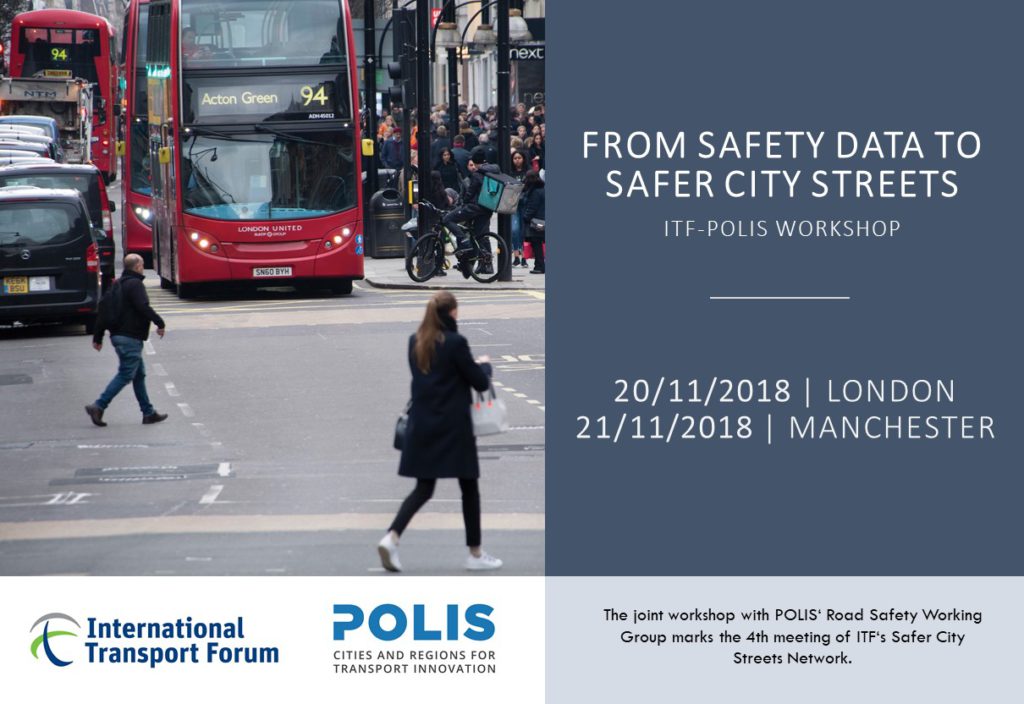Past Events
ETSC PIN TALK: Vision Zero: les collectivités locales au coeur du dispositif

SUMP 2.0: Reshaping the EU Sustainable Urban Mobility Planning Guidelines
Public launch of project on regulation & governance of disruptive mobility
H2020RTR: Results from road transport research in H2020 projects
#H2020RTR18: Results from Road Transport Research in H2020 projects

Go Mobility – Basque Sustainable Mobility Industry Exhibition
ECOVATION 2018 – Innovation and Sustainability in Public Procurement
Urban Transitions 2018 Integrating Urban and Transport Planning, Environment and Health for Healthier Urban Living
2018 Annual POLIS Conference
